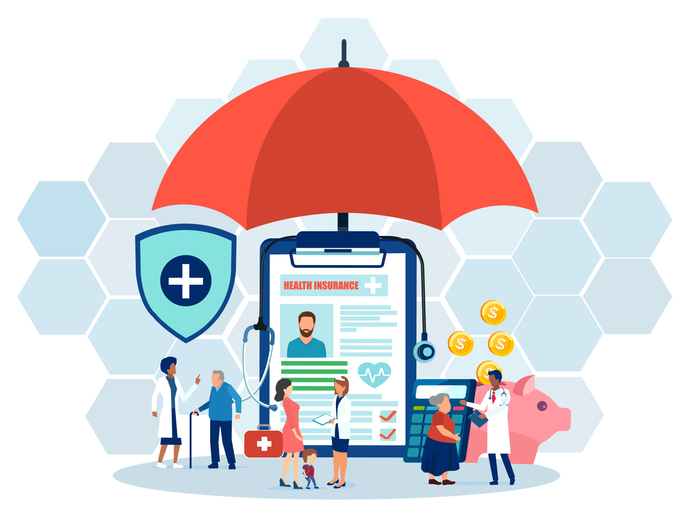Patient access to data will get much easier under two rules issued by the U.S. Department of Health and Human Services that expand access under the 21st Century Cures Act.
Highlights include allowing patients in certain federal programs to access their health information on their smartphones and the ability to request that medical records follow a patient from one payer to the next. The issue has taken on new importance as transitions of care and care coordination become more common.

Health Benefit Consultants, Share Your Expert Insights in Our Survey
Brenda Hopkins Brenda Hopkins is the Chief Health Information Officer for J2 Cloud Services . She specializes in the area of healthcare interoperability where she is focused on open data exchange of healthcare information inside and outside of the EHR and using open platforms and tools such as APIs as a means of sharing. Hopkins […]
Now comes the hard part, tying systems together to allow that level of interoperability.
Transferring patient information from hospital to nursing home, nursing home to inpatient rehab facility, imaging system to referring provider involves a labyrinth-like maze of different data standards and technology requirements. While one system can be connected to another, there is difficulty in seamless data exchange. The privacy and security of data is a critical consideration, and the custom nature of many connections open up the possibility of a devastating data breach.
Several technologies exist for connecting IT systems, and each has its positives and negatives. Let’s take a look at each.
Point-to-point integration
As the name suggests, point-to-point integration links one specific system with another. This connecting code could be written by internal IT staff or by a software vendor. In either case, it allows a message or information to be delivered from one disparate system to another.

A Deep-dive Into Specialty Pharma
A specialty drug is a class of prescription medications used to treat complex, chronic or rare medical conditions. Although this classification was originally intended to define the treatment of rare, also termed “orphan” diseases, affecting fewer than 200,000 people in the US, more recently, specialty drugs have emerged as the cornerstone of treatment for chronic and complex diseases such as cancer, autoimmune conditions, diabetes, hepatitis C, and HIV/AIDS.
The “language” of each message or data point is not affected, so one message won’t be magically transformed into the language of another. But it does allow some greater functionality of the host system, allowing a provider to electronically deliver an e-prescription without leaving the EHR, for example.
Since each connection requires its own point-to-point integration, the amount of code required can become enormous – quickly. Each must be maintained, a further expense, and these connections are notorious for providing vulnerability with other connections. The security of information is also a considerable challenge.
Application programming interface (API)
An API ties together disparate systems to allow information sharing in a more organized fashion than point-to-point connections. Think about the software you’ve bought that features an automatic or near-automatic connection to another system. That connection likely occurs through an API.
However, these systems likely speak different technology languages, so one system can’t fully ingest and then use information from another system.
Want to tie in another system? That’s another API bridge between the systems. If a provider or health system needs connections to a dozen other systems, that’s a dozen APIs or point-to-point connections that have to be adapted or coded from scratch. APIs have provided the infiltration mechanism in an increasing number data breaches, as evidenced by recent incidents at Instagram, Salesforce, McDonald’s and others.
Fast Healthcare Interoperability Resources (FHIR)
FHIR is a data standard designed to encourage patient data portability and accessibility. It also can use universally structured data to assist with automated clinical decision support and machine-based processing.
The new rules specify HL7 FHIR Release 4.0.1, but there are other active versions of FHIR being used. This disconnect likely will continue to hinder data sharing. Further, many EHR developers don’t allow read/write access to their platforms, stifling the two-way communication required for true data sharing.
Direct Secure Messaging
Healthcare organizations use Direct, a digital messaging tool similar to secure email, for such communication as pharmacy prescriptions; referrals; admissions, discharges, and transfers (ADT); automated push-event notifications; and even messaging directly with patients.
Drawbacks include user frustration, as many people find Direct Secure Messaging complicated and not user-friendly. Sending a message requires a unique Direct address and knowing your recipient’s address. That may be why many of the providers, insurers, labs and clearinghouses you work with regularly aren’t Direct users.
Legacy fax
According to one private firm’s estimate, 75% of medical communication still occurs via fax. That ubiquitous fax machine on the registration desk may have been replaced by a multifunction machine, but it’s still fax. Low cost, HIPAA compliance (as long as faxes aren’t left on the machine) and interoperability are all plusses.
On the other hand, we all know that faxing can waste time and delay care if the machine isn’t monitored constantly. While faxes do speak the same “language,” the inputs and outputs often have to be scanned, collated and assigned to a patient, none of which bring value to true care coordination.
So, what’s the answer?
The answer is a single platform that leverages the best of the above-mentioned technologies and promotes interoperability by connecting the entire healthcare ecosystem. Providers can send, receive, find and use such patient data as continuity of care documents, unstructured data, PDFs, images and more. Any content can be absorbed directly into the patient record.
Such a platform provides visibility into data-exchange activities across your organizations while maintaining HIPAA compliance on both inbound and outbound data. It allows connectivity access to referral networks, ACOs, community and state exchanges and HIEs, including patient queries through CommonWell Health Alliance and Carequality.
Care coordination is a critical success factor for an increasingly older patient group who are transitioning from care setting to care settings. It’s equally critical for providers who are facing competition from non-traditional providers and innovative startups that are threatening the healthcare status quo.
Photo: jacoblund, Getty Images
Brenda Hopkins is the Chief Health Information Officer for J2 Cloud Services . She specializes in the area of healthcare interoperability where she is focused on open data exchange of healthcare information inside and outside of the EHR and using open platforms and tools such as APIs as a means of sharing. Hopkins started her career as a pediatric/neonatal transport nurse and brings a patient/user centered team-oriented approach to technology build and enablement for leading software solutions.













